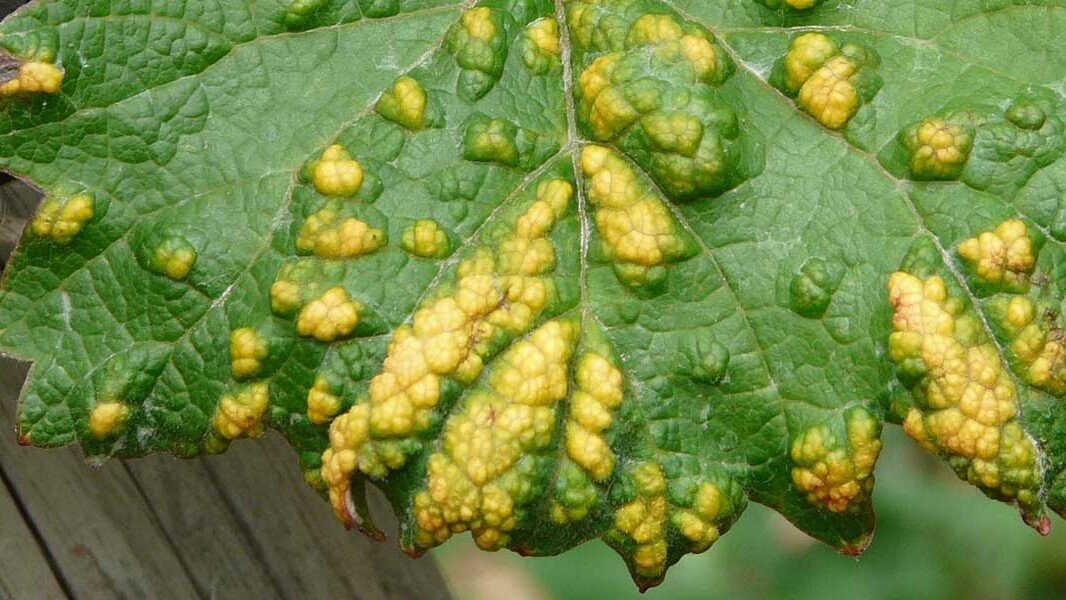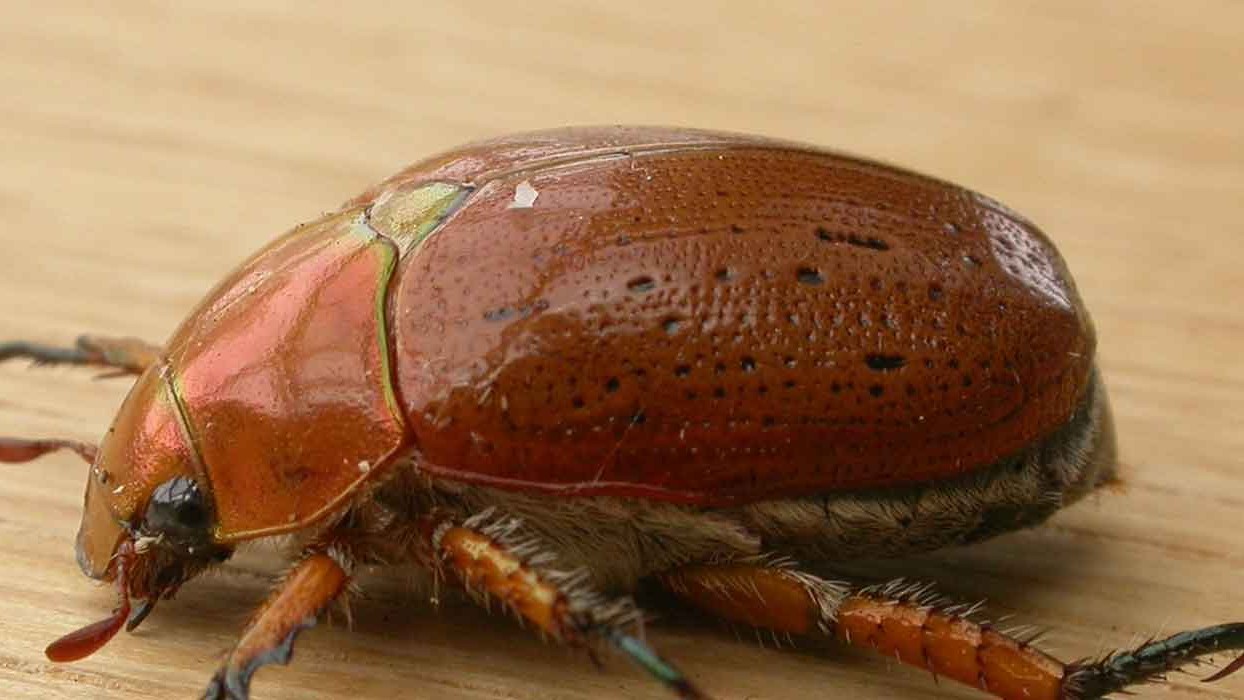Mites undergo incomplete metamorphosis. They hatch from eggs into six-legged larvae. They then molt and emerge as eight-legged nymphs, which molt again into an eight-legged adult.
The most familiar pest mite is the red spider mite (also called two-spotted mite) Tetranychus urticae.
It’s a serious pest of a wide range of plants, including indoor plants. Both nymphs and adults suck plant sap, mainly on the under surface of leaves but when the infestation is heavy they will be found on the upper surfaces as well. The adults are only just large enough to be seen (the photograph left is magnified)

Damage to plants is seen as rust-like, mottling or speckling of leaves (as shown here). Severe infestation will cause yellowing of leaves and eventually leaves may die and fall off. Damage can be confused with other plant pests though, so correct identification is necessary. Webbing can often be seen on leaves.
Control of Mites
Mites spread by many methods. They can crawl from plant to plant; they can be windblown, transferred by moving pots around, and even on cutting material. High temperatures during dry or humid conditions will increase mite activity.
Pesticide (miticide) resistance can be a problem, so more than one miticide is usually required. And because mites tend to congregate on the under side of leaves, contact sprays are not very effective. Miticides can target specific life stages of mites too. Avoid non-selective pesticides as these will be toxic to useful predators as well.
Sanitation in the home garden is the most effective control. Be vigilant and take action before mites become a severe infestation, by removing and destroying affected plant parts, avoid handling infested material or touching affected plants with clothing. Keep weeds in check as these can harbour mites.
Predatory Mites
These mites actually consume other mites. They prey on eggs, nymphs and adults and their use in the horticultural industry is now common place.
Banner image: Aleksey Gnilenkov from Moscow, Russia – Tetranychus urticae (Koch, 1836), CC BY 2.0, https://commons.wikimedia.org/w/index.php?curid=25421455
Related Articles:
Prevent Pests in Your Garden
If you can prevent pests in your garden you will save time, resources and money as well as helping your garden flourish. Effective pest control is…
Christmas Beetles
Most of us would be familiar with the brightly coloured, glossy and sometimes iridescent Christmas beetles. We often see them dazed and confused,…



